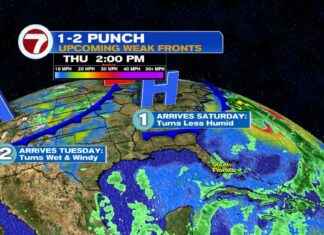The fire at the Teatre, Fonda and Golden nightclubs in Murcia is the worst in the last thirty years, a painful distinction. The origin of the fire would be linked to a short circuit, according to the first investigations, as already occurred in what is so far the worst incident in nightclubs that has occurred to date in Spain.
The front page of La Vanguardia on December 19, 1983 featured the pained faces of the relatives of the victims of the fire that occurred two nights earlier at the Alcalá 20 nightclub in Madrid.
Inside, on its interior pages, the chronicle explained how most of the victims died “in just three minutes” according to the forensic report. Carbon monoxide inhalation and crushing were the main causes of death of the 81 people who lost their lives in a room that, according to survivors, had kept the gates closed during the event.
40 years later, the event from the night of Saturday to Sunday in Murcia stands as the deadliest in three decades. There have been others that are closer, such as the incident at the Madrid Arena, in which five young people died during the Halloween party in 2012. In this case, it was not the fire but a blockage at the exit that caused a human avalanche that led to a tragedy. . Before, on January 14, 1990, history also forces us to look at Zaragoza, where the Flying nightclub burned, leaving 43 people dead.
The space became “a gas chamber” for the young people who occupied it, as chroniclers of the time reported, as they inhaled carbon monoxide produced by the incomplete combustion of certain materials in the room.
The firefighters identified that the fire had started in some rooms that were used as a warehouse and where the electricity meters and the air conditioning system were located. “From there the fire spread through the false ceilings and electrical conduits to the basement,” explained the then head of the Zaragoza City Council Fire Service. They all died of asphyxiation.
The history of nightclub disasters also includes Ubrique, a town in Cadiz where six people lost their lives and another ten were injured after a nightclub burned down in 1979. The event is different from the previous ones because the nightclub was already closed when the fire struck. fire, but it blew up the roof of the premises, affecting the homes that were located above and the people who lived there.
Likewise, also in 1979 and just a month later, the fire broke out at the Charada nightclub in Madrid, which caused the death of four people and left eleven others injured. That winter night, around eleven o’clock, an explosion was heard from outside. Inside, the flames began to catch the ceiling, covered in carpet, and quickly spread to the walls, the floor, the furniture and belongings in the room.
Since 1978 there have been 144 deaths in similar accidents. Among them, the four who died in a fire caused in the Scala nightclub in Barcelona in 1978 or the four people who lost their lives in the fire at the Miami Club, also in Barcelona. Here the reason was also a short circuit.
Forty years later, the event from Saturday night to Sunday in Murcia stands as the deadliest in three decades. In the most recent memory is the tragedy of the Madrid Arena, which is not a nightclub, but a municipal venue, but it did act as such. On November 1, 2012, five young people at a Halloween party died in an avalanche while trying to leave the venue that had double the permitted capacity.








